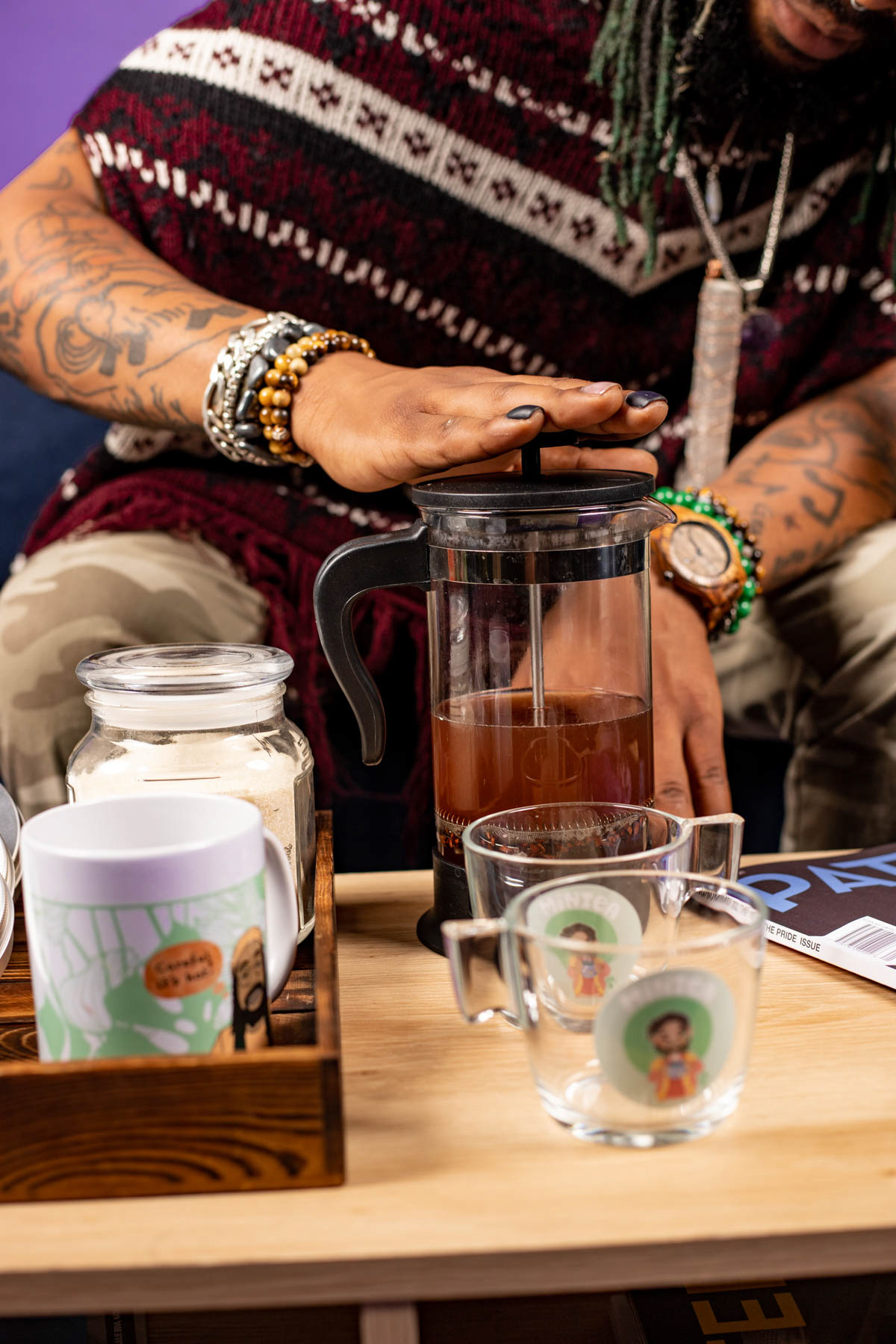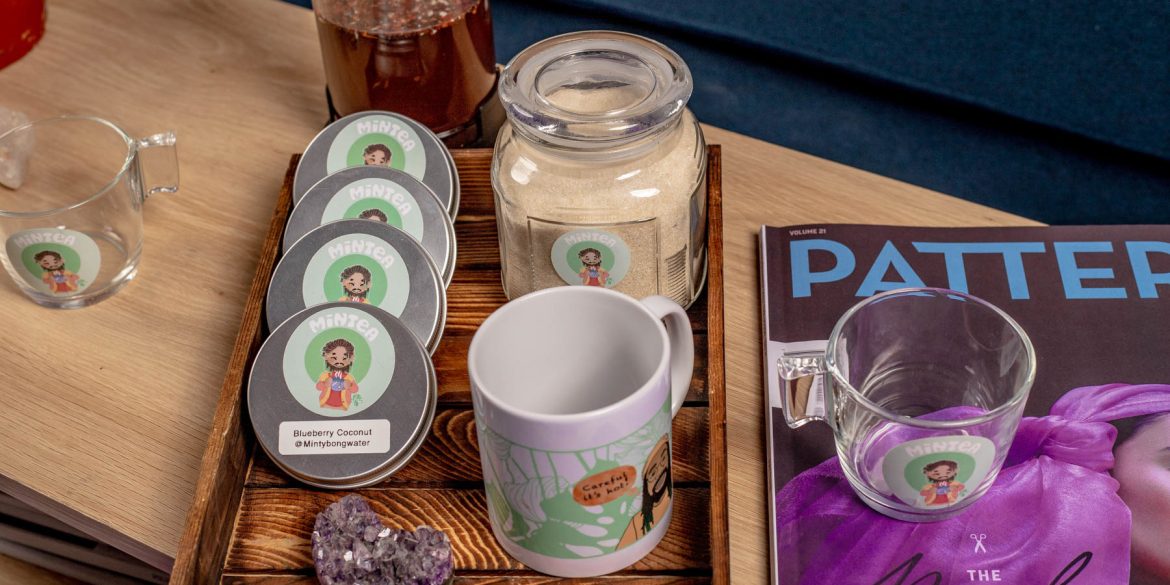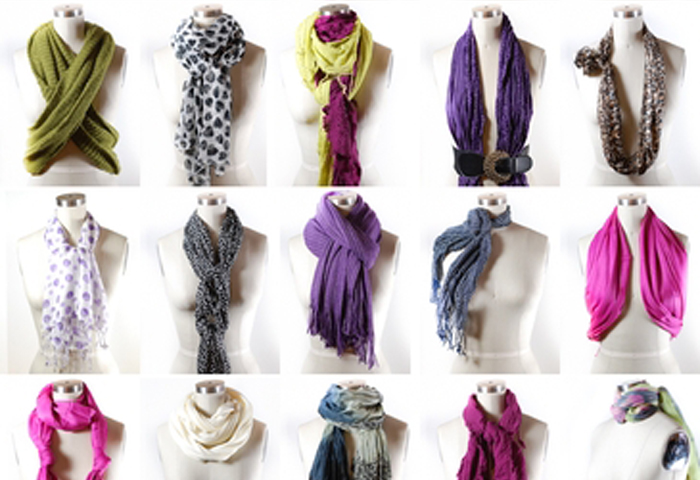Content creation has become a full career in the past few years. We’ve seen the pandemic play a large part in this shift. When people had to stay inside, and in some cases couldn’t work, they found other things to do and then they made videos about it. Cooking, crafting, making art, exercise, and simply waking up all became something to document in a creative and compelling way–and people love it. Making content well is way harder than it looks. It has to quickly draw the viewer in and immediately flow. PATTERN wanted to know who these people are behind the millions of followers and likes.
Terrell Davis is an Indianapolis-based content creator who makes dreamy teas and shares his immaculate morning vibes through good morning videos. On Tiktok and Instagram he goes by the name of @mintybongwater and has almost two million followers on the former. Davis’ niches are teas, plants, and crystals. Eventually he started selling his own tea, and created an entire brand around his content promoting merchandise and hosting tea workshops. We invited him to the studio to talk about all the ins and outs of being a creator. Check out the Q+A below to learn more about his potential IKEA deal, how he sets boundaries online, and the story of how he went from twenty-six to 14 thousand followers in one night.
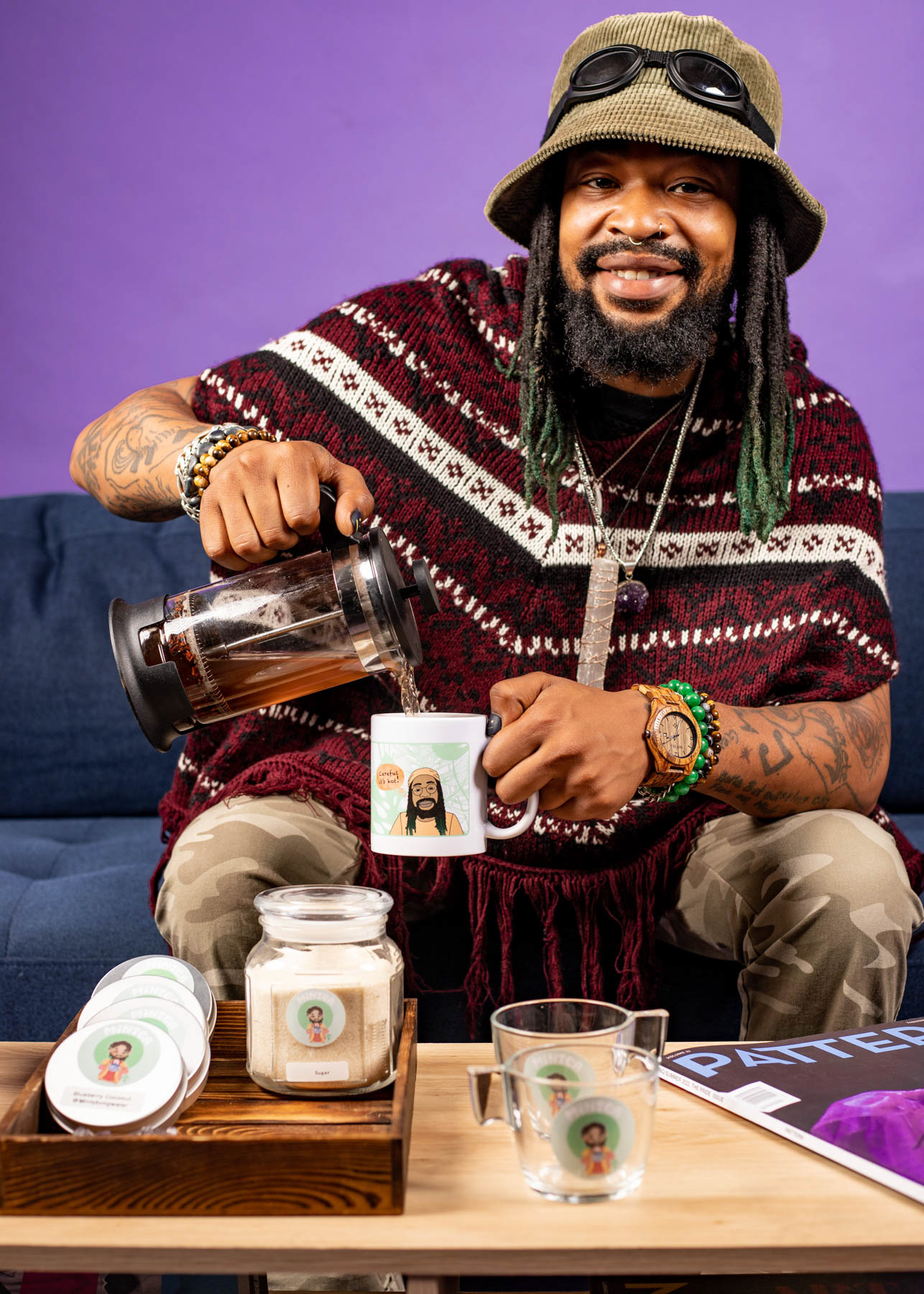
Cory Cathcart: Tell me about the content that you create.
Terrell Davis: I like to think of my content as being a Mr. Rogers for grownups–kind of like a new age Mr. Rogers or Bob Ross. I am the middle child of five. [As a kid] I was usually inside reading, or watching some kind of educational TV. We didn’t have cable growing up, so WFYI was the biggest thing. Bob Ross, Mr. Rogers, Steve from Blue’s Clues– they were big pillars for me and my content. A lot of the content I make is short form, informative, point-of-view content. The three niches that I have are typically tea, plants, and crystals. I’ll usually open up with a good morning video where I’ll talk about a tea of the day, crystal of the day, and plant of the day. With the crystal I’ll either talk about its geological aspects or spiritual aspects, depending on what people believe in. Then I’ll pass it through the camera as if they could actually take it. With the plant, [I talk about] what kind of plant it is, how long you need to water it, whether or not it’s toxic to cats or dogs, or how much light it may need. I give people feel good content while still providing some kind of information. I think during the height of the pandemic is when people came to appreciate that the most. Houseplants sales skyrocketed, a lot of spiritualism skyrocketed; as well as people making their own things, a lot of DIY crafting, and just a lot of creative expressiveness that we didn’t really see. I make that kind of content and then loop it into overall wellness–mostly mental wellness. Encouraging people and showing people how I use those practices for myself in order to influence or inspire people to do the same for themselves. That’s kind of what my content has always been about.
CC: Was there a moment where things took off for you on Instagram or Tiktok? Was it zero to one hundred or more gradual?
TD: It was zero to one hundred. I had twenty-six followers in March of 2020. I’ve always had a green thumb. I’ve always been into plants. I would do a couple living room tours of the plants in my room or in the living room. I didn’t really think it would go anywhere. But then there was a particular day on Tik Tok–there was a bit of an uproar going on on the social media platform concerning how they were treating creators of color–and so there was a day that millions of TikTok viewers had assigned they were only liking, commenting, and showing love to content creators of color. Tiktok’s algorithm, at the time, had a reputation for suppressing people of color. It was an organizational strike, in a way, that everyone had put together in order to see what would happen, so I made a video. I came home from work and I made a video talking about how much I love plants. It’s a montage video of me watering plants, like dancing with a couple of them. I went to sleep that night with twenty-six followers, and I woke up the next day and had 14,000. I didn’t know what to think. I talked to several different people, and it was brought to my attention that anything around 10,000 followers–that’s a platform. I was like I got to do something with this; I just kept making more videos about plants. That was my biggest niche at the time. Then it slowly went into me talking about other things that I appreciate. I started out going from plants to crystals and a bit of metaphysical– that whole spiritual journey–just talking about different chakras, zodiac signs, and so on. From that point, I shifted over into talking about how I like tea.That’s when I got the idea to do a good morning video. Being a content creator, it’s mostly encouraged for you to have one niche. My idea was: how can I group the three of these together and brand that as who I am to my audience? One morning before work, I got a cup of tea together to pour, I found a crystal in my room, and had a plant–that’s when I did my first good morning. Eventually those videos started to pick up to do a million views.
CC: Does that feel weird to say that a million people have watched your videos?
TD: It’s kind of like when you’re in the shower and the water has been hot for so long; it didn’t feel as hot as it was, you have to turn it up a little bit more. I constantly find myself having to remember that’s a lot of people. After so long, I’m just looking at a screen with all those numbers. If I go live I might have 300 people on a live session. I’m fine, because I’m sitting there looking at my phone. If I was in a room with 300 people I would freak out. I can’t say it doesn’t mean anything, but the number itself doesn’t mean anything until I think about how many people are actually behind that and what that means.
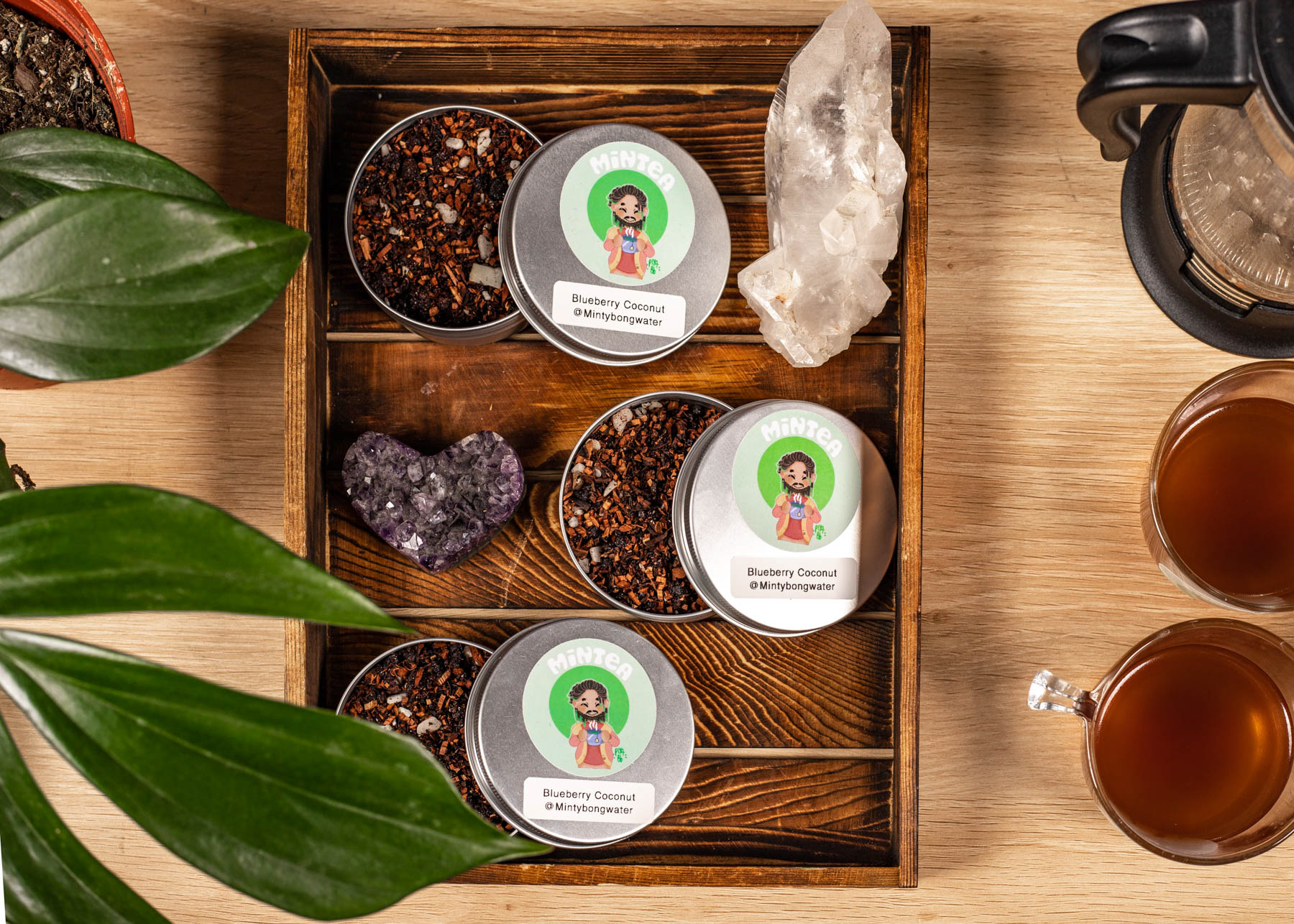
CC: What is your creative process in making a video?
TD: The good morning videos definitely have a formula. It typically depends on what plants I am watering that morning. As I go through [the plants], water them, or prune leaves… I start with that. Whatever tea I typically brew for myself in the morning is the one that I’ll pour in the good morning video. As of right now, I’ve been doing a lot of Blueberry Coconut or Mango Hibiscus, to keep my own tea line promoted. Then [with] the crystal, I’ll talk about something informative, and it also isn’t too much of a mouthful at the same time. It’s kind of like a TV show. It’ll have the same format of a solution and then there’s a new episode at the end.
CC: What has been the most challenging part of being a content creator financially?
TD: Being a content creator can’t be too far from being–I won’t say starving–but a struggling artist. Most of my money is made from sponsorships and from contracts. For instance, somebody is like, “Hey, I have this crystal company. We’ll send you a box of crystals and if you mention us in two videos a month we’ll pay you $600 for that month.” That does really well during the summertime, the spring, and sometimes in the fall. The wintertime, especially that zone between Christmas and New Years and maybe a little bit before, is a dead zone. Sponsorships aren’t paying creators to do as much in the wintertime. These companies can create Instagrams and Twitters and Tiktoks and try to sell their products directly, but it never works. There’s always somebody who’s a bridge who communicates that product to the audience. The audience is here, the companies are here, and they look to creatives to be in the middle. It’s like a stock market. There might be times when there’s highs, and people are reaching out and wanting to send money to you for promoting this product. Then there are lows where that doesn’t happen. One thing that I’ve found to be the most beneficial is having a line of my own products that my audience directly understands and has a connection with. That’s where my tea came in.
CC: How do you set boundaries for yourself?
TD: One of the biggest things is keeping certain social media apps to myself. Facebook is mine. I don’t have fans or followers on Facebook. It’s my family and my friends from high school. Another thing I do is not reply to comments for any more than thirty minutes of video. I won’t give any video any more than maybe twenty or thirty minutes of replying to comments. That, I’ve learned, has stopped me from getting in that black hole. Then reminding myself that I never needed any of this. It never had to serve my ego to have that many likes or to have that many views.
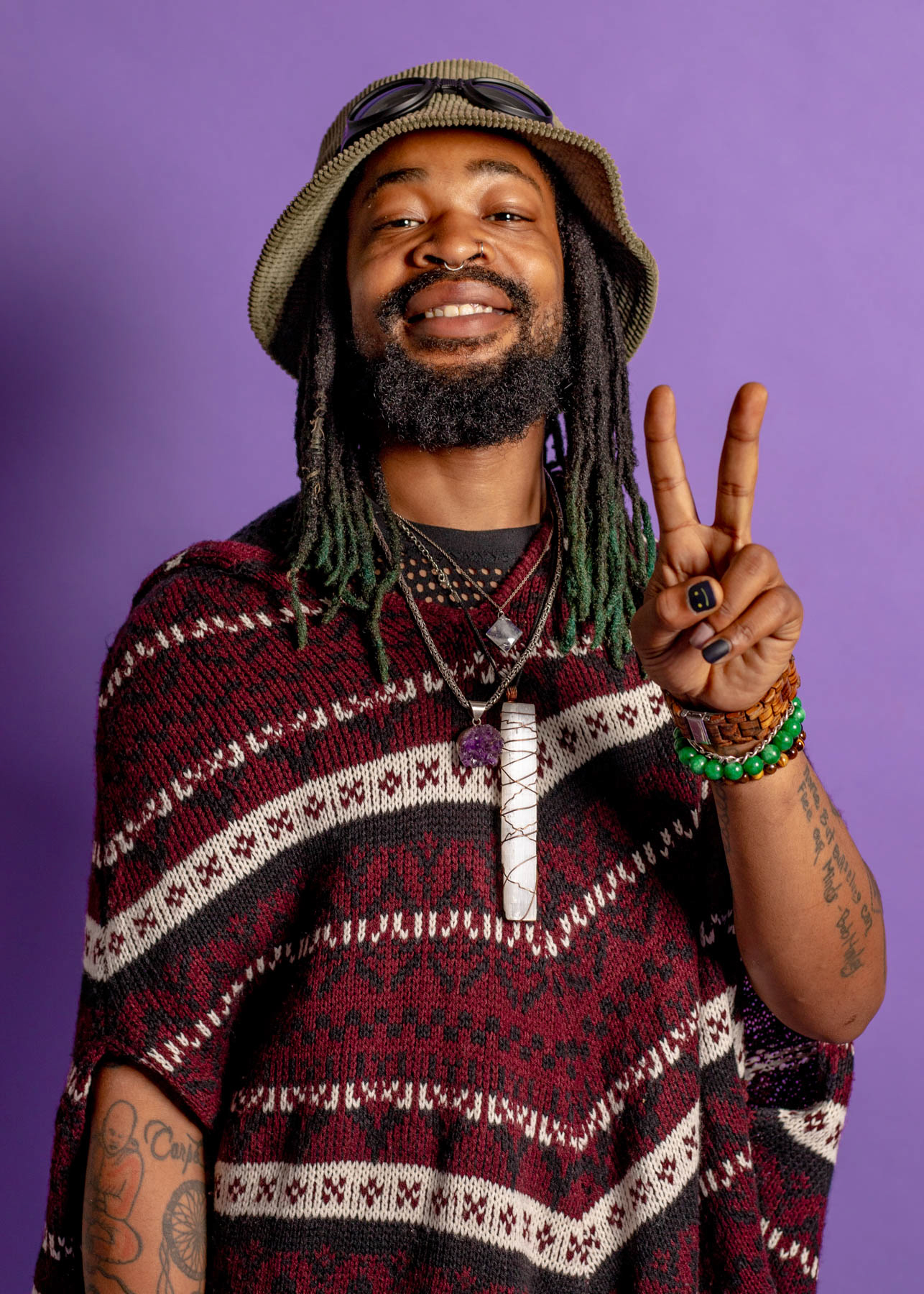
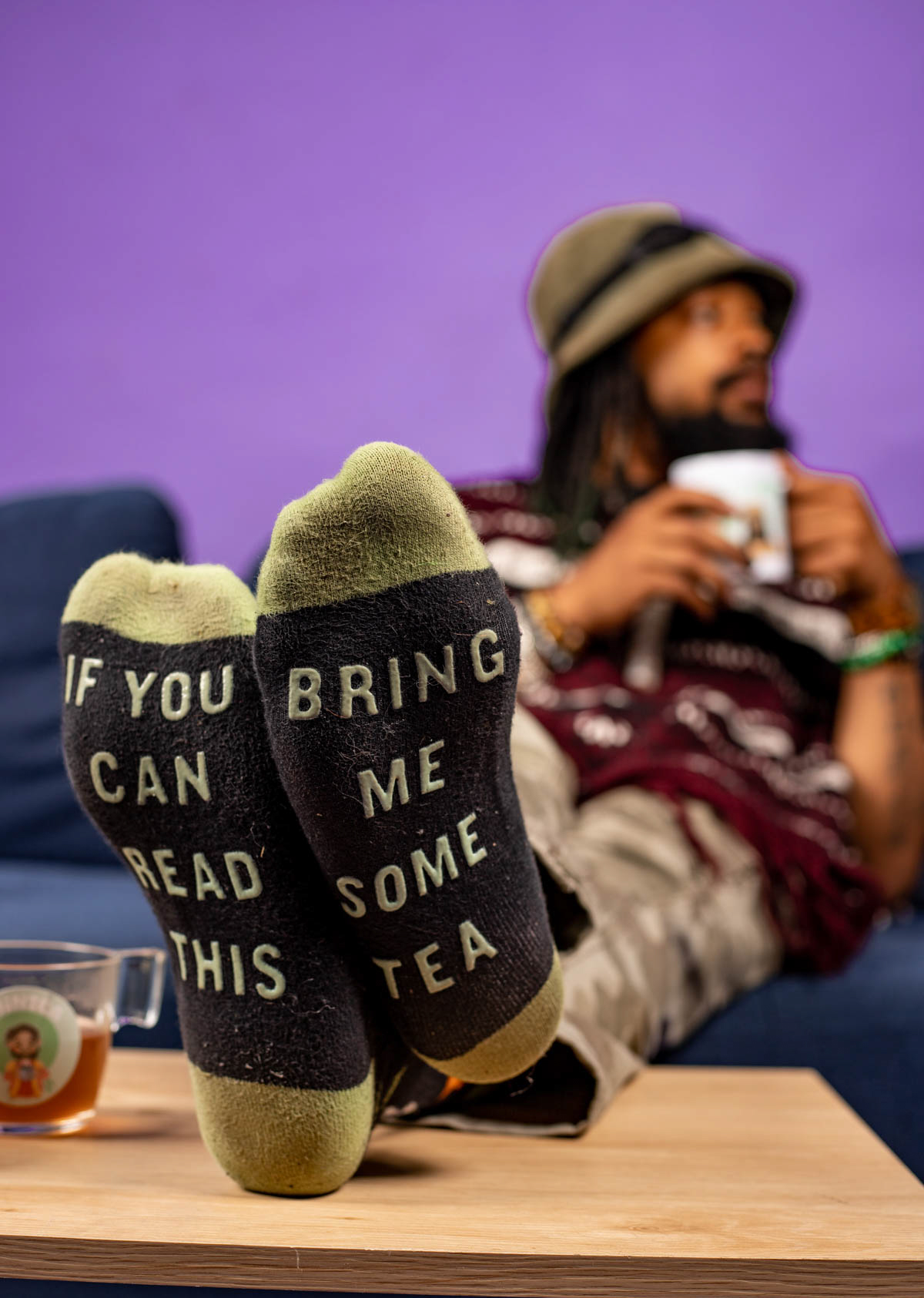
CC: Tell me about this IKEA business, and anything else big coming up for you.
TD: The whole thing with IKEA is I go in there a lot; I purchase a lot of French presses. I probably own at least seventeen to eighteen french presses. People ask me all the time where they can get french presses from. I kind of made a joking video not too long ago where I tagged IKEA and was like y’all are gonna have to pay me at this point. I reached out to them on Instagram. I then screenshotted it and posted it to Instagram so that people can provide feedback. Then I sent that feedback to IKEA, as well as all of the footage of me using their french presses, pictures of me using them in workshops, and opportunities where they could see that it would benefit both of us to have this collaboration. They told me where to send emails, I’m friends with the people on LinkedIn, and everyone’s got their fingers crossed. Somebody commented under my video about it, and IKEA responded to them and said that they’ve got their fingers crossed over there. That’s exciting. I really looked to Erykah Badu as a big model for collaborative merchandise. I think collaborative merchandise is such a cool idea. I’ve noticed that she has her own line of merchandise, but she’ll also have lines of merchandise that she’ll release with other companies. I modeled myself after that. There’s a necklace that I usually wear that has a green crystal leaf on it. It’s in tigereye, so it kind of looks like a branch with a leaf coming off of it. I’m getting ready to do a collaborative drop on those necklaces with the person who made that for me. I think they’re gonna make twenty-five or thirty of them. If this doesn’t work out with IKEA I’m going to take my pitch to Target. Target already has a reputation of working with Black entrepreneurs. I want it to be that way for people to see my influence and to see me being in the room. I’m getting to a point where I am screaming that I belong in rooms with certain people in places and companies.
CC: Any last advice?
TD: I would just say consistency is really key. The more unique your niche is, the better. You really do have to meet everything halfway. Being younger, I would have friends who would want jobs, but they would wake up at two in the afternoon or not fill out job applications. Saying you want to be a content creator is so much deeper than just saying it over and over until that happens. There’s a lot that has to be done. I didn’t go to sleep until three in the morning because I’m packing tea, and I’m on [Instagram] Live talking about me packing tea because I also need to sell tea. I want to get ideas for a new flavor of tea. There’s just so much interaction that goes into it. Being a content creator and existing on the internet means that you’re in a place where time doesn’t exist. If it’s three in the morning for you, somewhere in the world you still have 100,000 to a million people watching you because they’re just now waking up. You’re almost putting yourself into a different world and inviting people to join that world with you. Time doesn’t exist there, so there’s a lot of balance that’s necessary.
